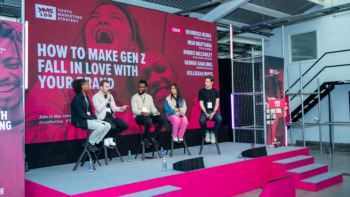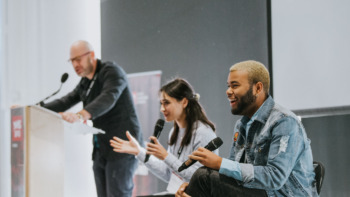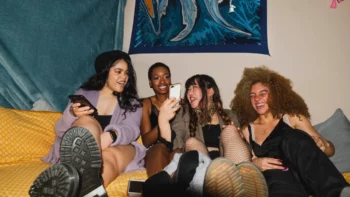Thanks to scandals and oversaturation, trust in influencers is decreasing amongst Gen Zers. They’re craving authenticity and connection, and content creators are having to come up with new ideas in order to maximise engagement.
New and emerging trends on social media platforms such as TikTok give creators and brands the exciting opportunity to ditch curated feeds. In this blog post, we’ll be highlighting key takeaways from our recent Youth Trends webinar, focusing on the de-Instagramification of content creators and the new movement taking social media by storm: de-influencing.
What’s the problem?
Trust in influencers has decreased over recent years, and when we think about the scandals, the oversaturation within the market, and Gen Z’s ever-changing wants and needs, that comes as no real surprise. In fact, engagement with influencers has dropped by 12% since 2020.
Now, Gen Z wants authenticity and entertainment from the content they consume and the brands they interact with. This young generation is no longer interested in watching celebrities show off their luxurious lifestyles, they want content creators and influencers to be relatable. In fact, one TikTok hashtag, #EatTheRich, (1.2B views), is used as a direct way of fighting back against class wealth and privilege.
The most popular platform that hosts content creation
So, what impact is this having? Well, Gen Z’s lust for authenticity is driven by their favourite platform, TikTok. Used by 79% of UK Gen Z males and 87% of females, the short-form videos offer a more authentic look into a creator’s life and is easier for users to create content quickly and build communities. In fact, our Youth Trends Report revealed that 30% of Gen Zers trust creators on TikTok more than they do on other apps. This, in turn, impacts shopping habits: 13% of young people would buy a product if it was trending on TikTok.
De-influencing, content creators and reaching your target audience
So how are Gen Zers interacting with content creators and products? Well, there’s a new trend that’s having a big impact on the influencer marketing world: de-influencing.
De-influencing involves creators/influencers encouraging users away from buying products, instead of (perhaps falsely) showcasing the latest trending items.
The trend came about in response to the growing distrust towards creators, something that they’d picked up on. Consumers are seeking connection, and de-influencing makes viewers feel like they’re engaging with a friend, and that the creator has gone above and beyond to look out for them.
Where to find content creators for your brand
Finding the right creator to work with your brand can be tricky – you want someone who’s engaging, personable, relatable, and authentic. In fact, 81% of 16-24s prefer the people they follow to share their own values, and ‘honesty’ is the most used word among Gen Z consumers when asked ‘How can influencers get it right?’.
Today’s students are influenced by their peers, and advertorial content needs to blend seamlessly in with their social feeds (something that can be difficult for brands to achieve in-house). And that’s where Student Beans Creators comes in!
Why Student Beans Creators?
So, how can we help you boost your brand’s potential and how can you grow using our creator programme?
- We know the audience you want to target
- Outperform other influencers on the same scene – our student creators have a 104% better click-through rate than big-name influencers
- You’ll benefit from a multi-channel campaign
- Benefit from an entirely bespoke campaign tailored toward your KPIs
Plus, much more! You can find out more about Student Beans Creators here.
What’s the future of influencer marketing?
So, how does de-influencing impact the future of influencer marketing? 2023’s successful creators couldn’t be further from the filtered influencers of the past, and short-form content makes content more authentic and easier for users to share, create, and build communities.
For brands, you now have a licence to be vulnerable, not polished. It’s an exciting development in the influencer space and one which will continue to grow within the marketing world.
Like what you’ve read? You can watch the full Youth Trends LIVE webinar on-demand now.














